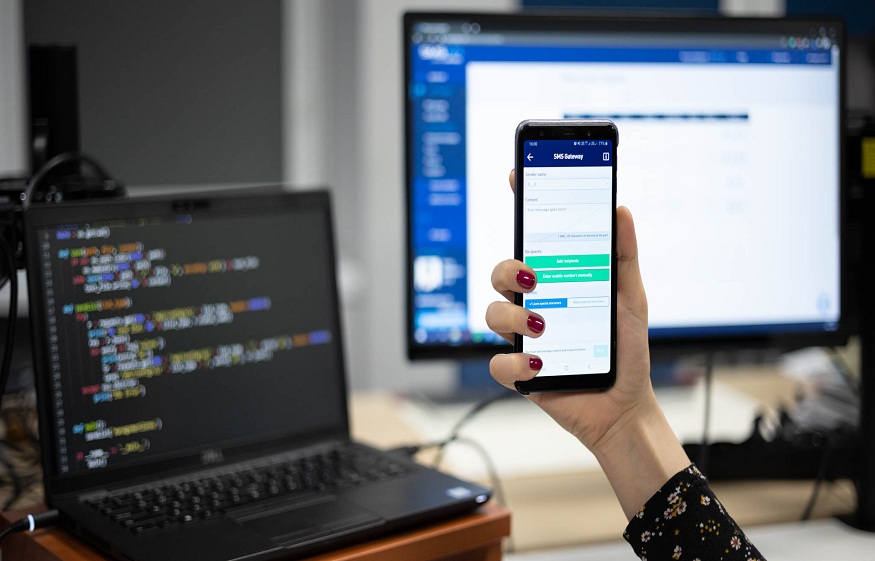Customer service may need to communicate via SMS, just like marketing teams. With an average reading rate of 97%, SMS is indeed a very effective means of communication. Informing about the exceptional closure of a store for inventory, reminding of an upcoming appointment or even notifying the delivery of an order: this type of mass SMS can be automated thanks to software, capable of integrating with the customer service and logistics tools already in place in the
What is Bulk SMS Software for Customer Service?
A bulk SMS sending software for customer service is a tool that allows you to create standard messages and schedule them to be sent to one or more customers at frequent intervals. Example: Customer service uses software to automate order tracking SMS messages.
Unlike the marketing department’s use of it, customer service does not use bulk SMS software to distribute a message en masse as part of a campaign. Rather, it is about automating recurring customer service processes: appointment reminders, order or complaint file follow-ups, delivery notifications, customer review requests or satisfaction surveys. Each customer receives the same SMS, but at a different time.
In customer service, SMS are also used for conversational purposes: “SMS response” functionalities must be offered for this purpose by the software.
How does bulk SMS sending software for customer service work?
The operation of a bulk SMS sending software, dedicated to customer service as to any other service, is simple. All you have to do is import a list of contacts, write the message and then send it or schedule it to be sent at a later date and time. The sender name, of course, is personalized by the user company. Performance statistics are available some time after sending.
Here are recommendations at each step to optimize the performance of bulk SMS sending.
1 – Import contacts
When importing contacts, you need to check that everyone has authorized SMS communications. Beyond the legal issue with regard to GDPR, the issue concerns brand image. A customer service that sends untimely SMS messages does not reflect well on the company.
2 – Write the message
A short SMS is more likely to be read – which explains the 160 character maximum per message. At the end of the message, you must give the option to unsubscribe from the mailing list – the famous “STOP SMS”. These recommendations are suggested by SMS customer service software.
Software offers templates for inspiration. Generative AI also helps to write effective SMS in customer service.
3 – Schedule the shipment
The software, a priori , only allows sendings to be scheduled at times authorized by law – between 8 a.m. and 8 p.m. Monday to Friday, between 10 a.m. and 8 p.m. Saturday, excluding Sundays and public holidays.
In addition to this very pragmatic aspect, strategic recommendations are required, to be applied when setting the sending programming parameters.
Recipients: segmenting your contact base is important to send the right SMS to the right recipients. To inform about the special opening hours of a store on a public holiday, for example, you must select the customer segment that corresponds to the geographic location of the store.
Date and time of sending: for some SMS, such as appointment reminders and delivery confirmations, customer service systematically sends the same message at the same time – respectively a few hours before the appointment and once the order has been delivered, in the example. These times are determined by events and not by specific dates or times. To schedule this type of mass SMS from customer service, scenarios must be configured where the sending is triggered at the desired time. To do this, the software integrates with the customer relations and logistics tools in place in the company. Integrated into a CRM tool, the customer service SMS sending software also allows the message to be personalized, with the first and last name of the recipient.
4 – Analyze statistics
Bulk SMS software collects and returns useful data:
The opening rate indicates whether the contact list is qualified. The opening times, in addition, allow you to refine your strategic sending times.
The conversion rate indicates, in the case where the SMS is enriched with a redirection link to a web page ( rich SMS or enriched SMS), how many recipients have clicked on the link. This data allows you to improve the writing of your SMS, and to better segment your customers.
The STOP SMS rate indicates the proportion of recipients wishing to unsubscribe. A high proportion may indicate annoyance, the causes of which must be sought: sending too frequently, communication channel unsuitable for customers or even declining customer satisfaction.



